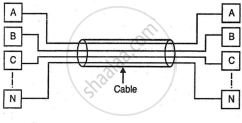Topics
Introduction to Microprocessors and Organization of 8085
Instruction Set and Programming of 8085
Introdcution to Inted X-86 Family
Introduction to Microcontroller
Networking Technology
- Introduction to Networking
- Types of Networks
- Multiplexing
- Study of Transmission media
- Coaxial cable (Cable Media)
- Twisted pair cable
- Fiber Optic Cable
- Unbounded (Wireless) Media
- Access Methods
- Network Topologies
- Ethernet (Network Architectures)
- Token-Ring (Network Architectures)
- Internet protocols
- Introduction to connectivity devices
- Techniques of Multiplexing
Multiplexing
Multiplexing technique can divide the original data stream into several lower bandwidth channels. Each of these can be transmitted through a lower capacity medium. The signals can be recombined at the receiving end. Multiplexing refers to combining multiple data channels for transmission on a common medium. Demultiplexing refers to recovering the original separate channels from a multiplexed signal.
Techniques of Multiplexing
A) Frequency - Division Multiplexing (FDM): In this technique all data channels are converted to analog form. Each analog signal is modulated by a separate frequency called carrier frequency. At the receiving end, the demultiplexer can select the carrier signal and recover the data signal. In FDM, bidirectional signaling is possible on same

B) Time Division Multiplexing (TDM): Time Division Multiplexing (TDM) divides a channel into time slots for transmitting data streams. With agreed time slot assignments, the receiver can reconstruct the original data. In statistical TDM, more slots are allocated to busy channels, while idle channels receive none, improving medium efficiency.

C) Space Division Multiplexing (SDM): This is the simplest method of physical multiplexing in which physically individual communication lines are packaged at the source. At the receiving end, each line slot is separated to connect each line to individual destination, as shown.

